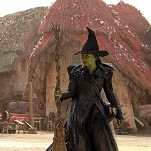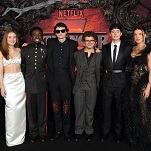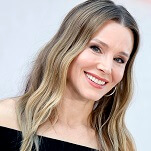Keeping Up With the Kardashians embraced female archetypes and created an empire
For most of the history of television, the barrier to syndication—and to profitability—has been 100 episodes. The shows that have made it to that mark are an unusual group. Many were big hits. Some found small cult audiences. Still others just hung on as best they could and never posted numbers quite low enough to be canceled. In 100 Episodes, we examine the shows that made it to that number, considering both how they advanced and reflected the medium and what contributed to their popularity. This entry covers Keeping Up With The Kardashians, which started in 2007 and recently completed its 10th season.
It’s the fourth episode of Keeping Up With The Kardashians’ fourth season and Khloé Kardashian is excited. Newly married to professional basketball player Lamar Odom, Khloé suspects that she may be pregnant, an occurrence she greatly anticipates. It’s long been established on the show that Khloé, despite her sardonic exterior, is the caretaker of the family, as she was very influential in the upbringing of her younger half-sisters. Her morning sickness and missed period inspire her to take a pregnancy test, which comes back positive. Slowly the information filters through her chatty family tree, even before she manages to inform her husband. So prevalent is Khloé’s nausea, that her mother Kris and sister Kourtney joke about her vomiting when she excuses herself from the table to use the restroom in the final scene. So they’re confused when Khloé returns abruptly and digs in her purse for a quarter, until she resignedly quips, “I need a tampon.”
Khloé’s pregnancy that wasn’t and her continued struggles with infertility have long been one of the most human and relatable elements in the Keeping Up With The Kardashians universe, but those who’ve watched the series’ nearly 150 episodes know it’s far from the only resonating element. But the Kardashians, in general, are nothing if not a divisive clan, with haters as notable as President Obama himself, so how is it that such a notorious family has found such success in opening their lives to the masses? The show was recently renewed for an additional three seasons, a deal reportedly worth $80 million dollars.
Before we can delve into why Keeping Up With The Kardashians has been so successful, it’s important to examine the obstacles the series has to overcome with regard to public perception. A large part of the problem that KUWTK faces in the court of public appeal is the fact that it’s a reality television show. There’s something about the word “reality” that sets people’s teeth on edge, leaving many anxious to spout off about how “fake” reality television is. With its manipulative edits and creative storytelling, reality TV is dismissed as the the bastard child of scripted programming, much the same way as professional wrestling is dismissed as not being a true sport.
It’s a ridiculous dismissal, ultimately, because it focuses on the wrong thing. Like climate-change naysayers who crow about “global warming” in the midst of an eight-month winter, critics of the reality genre often get hung up on the label as opposed to the content. Reality television isn’t about creating an unimpeachable documentary to serve as the anthropological record of our time; it’s a way to craft narrative in new and different ways. Whether that narrative is meant to entertain or educate or irritate varies from show to show, just like any other genre of television. But that knee-jerk reaction to the mere idea of reality television is indicative of a fairly pervasive trend in cultural criticism as of late: judging a product you didn’t even bother investigating.







































